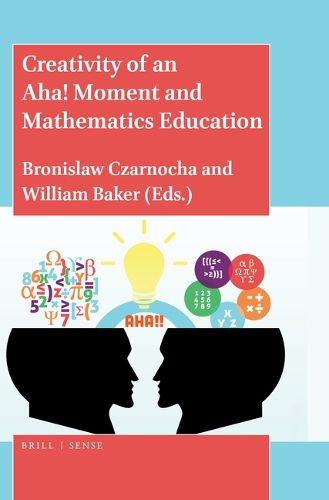Readings Newsletter
Become a Readings Member to make your shopping experience even easier.
Sign in or sign up for free!
You’re not far away from qualifying for FREE standard shipping within Australia
You’ve qualified for FREE standard shipping within Australia
The cart is loading…






Creativity of an Aha! Moment and Mathematics Education introduces bisociation, the theory of Aha! moment creativity into mathematics education. It establishes relationships between Koestler’s bisociation theory and constructivist learning theories. It lays down the basis for a new theory integrating creativity with learning to describe moments of insight at different levels of student development. The collection illuminates the creativity of the eureka experience in mathematics through different lenses of affect, cognition and conation, theory of attention and constructivist theories of learning, neuroscience and computer creativity. Since Aha! is a common human experience, the book proposes bisociation as the basis of creativity for all. It discusses how to facilitate and assess Aha! creativity in mathematics classrooms.
Contributors are: William Baker, Stephen Campbell, Bronislaw Czarnocha, Olen Dias, Gerald Goldin, Peter Liljedahl, John Mason, Benjamin Rott, Edme Soho, Hector Soto, Hannes Stoppel, David Tall, Ron Tzur and Laurel Wolf.
$9.00 standard shipping within Australia
FREE standard shipping within Australia for orders over $100.00
Express & International shipping calculated at checkout
Creativity of an Aha! Moment and Mathematics Education introduces bisociation, the theory of Aha! moment creativity into mathematics education. It establishes relationships between Koestler’s bisociation theory and constructivist learning theories. It lays down the basis for a new theory integrating creativity with learning to describe moments of insight at different levels of student development. The collection illuminates the creativity of the eureka experience in mathematics through different lenses of affect, cognition and conation, theory of attention and constructivist theories of learning, neuroscience and computer creativity. Since Aha! is a common human experience, the book proposes bisociation as the basis of creativity for all. It discusses how to facilitate and assess Aha! creativity in mathematics classrooms.
Contributors are: William Baker, Stephen Campbell, Bronislaw Czarnocha, Olen Dias, Gerald Goldin, Peter Liljedahl, John Mason, Benjamin Rott, Edme Soho, Hector Soto, Hannes Stoppel, David Tall, Ron Tzur and Laurel Wolf.